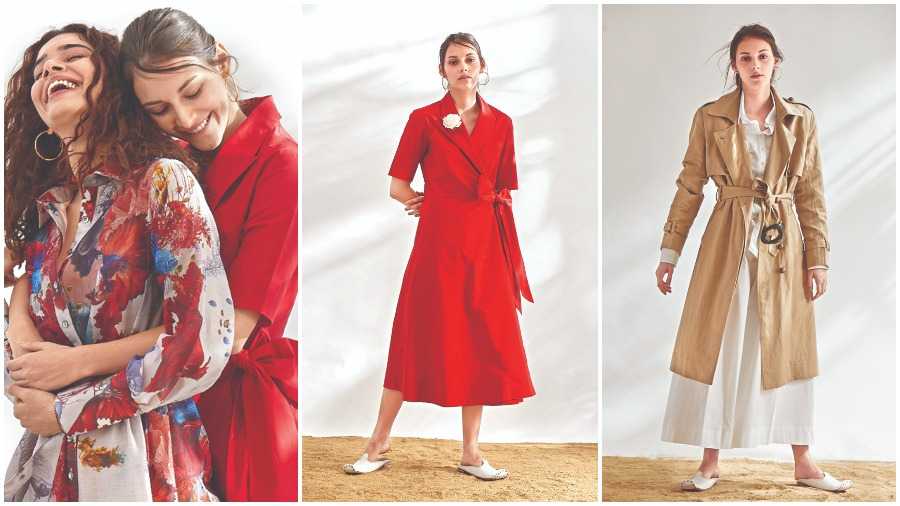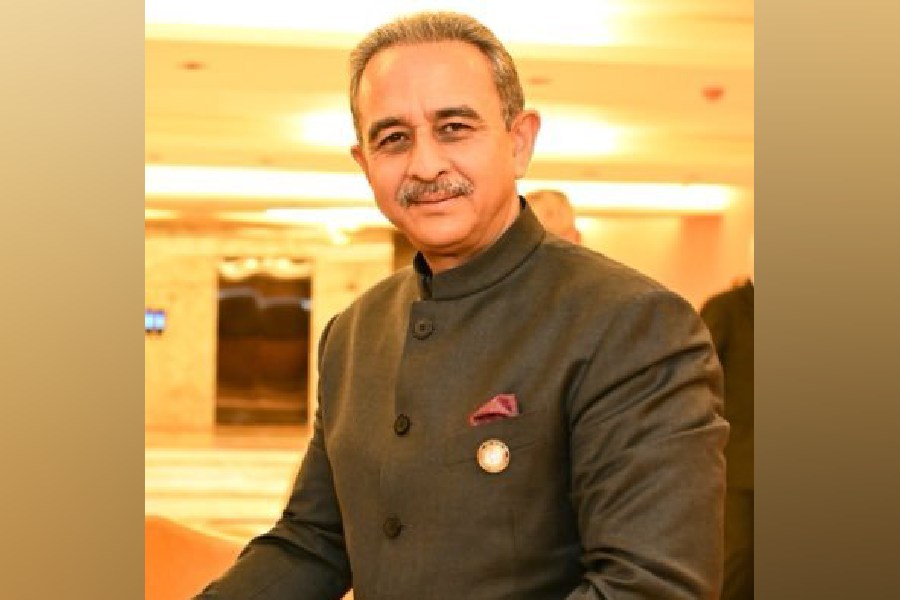A conscious collection from the diffusion range of Bangalore-based sustainable high-fashion label House of Three is aptly titled Sattva, its inspiration being rooted in the values of one of the three gunas or philosophical “modes of existence”. Easy, wearable silhouettes made using handloom or fine, surplus fabrics to cut carbon footprint, the collection is suited to our slower lifestyles at present. In a candid chat, Sounak Sen Barat, creative director and co-founder, House of Three, decodes their diffusion range.
How was Sattva conceived? Tell us about the diffusion category.
House of Three as a name is a reflection of design solutions for the mind, body and soul. Everything we do has a philosophical and a socialistic meaning to it. Every collection that we have made in the past has always been an amalgamation of the crafts and handloom textile heritages of two states at a time. For example, our previous collection Kalgi was about Uttar Pradesh and Kashmir. Lucknow Express was about was about West Bengal and Uttar Pradesh. Last year, when we had the lockdown and obviously, fashion was the last thing on people’s minds, we focused more on our diffusion category as against our pret and couture. These are three categories, including what we have other than home and interior solutions that we do. So diffusion came about as a necessity because everyone was working from home.
People did not want to spend too much money on fashion because honestly, nobody had any place to go to. So the same clients who would, at the drop of a hat, buy a
Rs 25,000 dress was now picking up or wanting to pick up two, three pieces in the same amount. This basically meant that the price had to be low, hence diffusion took the front seat.
Sattva is one of the three gunas or “modes of existence” (tendencies, qualities, attributes), a philosophical and psychological concept developed by the Samkhya school of Hindu philosophy. Sattva is a balance of Rajas (your high adrenal energies, passion and activity) and Tamas laziness or procrastination. Sattva is all about the balance of life, goodness, calmness and harmony. The philosophical connect was brought in, the colours were white because white is about a clean slate, about purity, about starting afresh and colours like midnight blue, which is about semblance and calm and the earthy tones.
How did you translate the idea of Sattva into clothes?
We always bring in a philosophical connect, a spiritual connect. This is how we live our lives, the two of us (Anu Shyamsundar, business director and partner) as partners and promoters. And we hire people who have the same mind frame. There are various projects that we undertake which are inclusive in nature and evoke a sense of collective consciousness, so to speak. For example, we used to curate from other designers and sell on our platform earlier during the pre-Covid era and post-Covid, we took that to the online space. Now, we’ve been working on a Covid relief fund along with certain other brands who we are welcoming aboard, who have the same sort of philosophy. These are times when brands should anyway stand up and tell its consumers that we are here for you in whatever way they can. This is not the time to sell fashion in the standard formats that used to be earlier.
The clothes are all wearable, something that you can wear and sit in front of a Zoom meeting or online session. The clothes are commercial. They are simple clothing using textiles, some of which are handloom, some of which are surplus mill-made-but-fine-quality fabrics. So the connect of Sattva is at a more holistic sort of a level.
How do you define trans-seasonality with your clothes? Why is it important that your clothes can be worn across seasons?
Although we launch seasonal collections but we never take them off the shelf. The way House of Three functions is that we stopped looking at trends a while back. We do our own thing. We take into account some reference for the colour palette for specific seasons when we launch a particular season. All our fabric bases are handloom textiles developed with different clusters in India — like Jamdani, Kanjeevarams, Benarasi or Pashminas. We use dabu prints or vegetable dyeing techniques in Jaipur or block prints.
All these are classical things which have stood the test of time for hundreds of years, probably a few thousand in certain cases. So for me, seasonality is a modern marketing concept. In a world today where we have depleting natural resources, we cannot afford to go about life in the conventional capitalistic ways of business.
These are the traditional ways of business and made sense a while ago when the industrial revolution happened. Now the whole world is moving towards a shared economy and maximum output with minimum input. This is why certain people are talking about a new way of defining consumerism where you buy less but you buy quality and you repurpose them, find out ways of wearing them differently every time and that’s clothing.
We as a brand believe in collective consciousness and inclusivity. Since Independence, our backbone has been the small and medium sector and the micro businesses. There’s a huge, huge market, which is too local, disorganised and the backbone of this country. So it’s important for us that as a designer label, as a sustainable design solution brand that deals in the luxury space, we have a certain privilege of influence. We don’t believe in just pumping in fast fashion in the season’s colours and mindlessly keep producing. It’s high time to produce lesser and smarter.
Our silhouettes are always classic. Our collection consists of clothes that one can wear, layer up, add to your existing wardrobes, mix and match. We try and create clothes which are basics — some are value-added basics like statement pieces that you can intermix and wear. We take a lot of effort in the design process to create clothes that have a longer shelf life. The reason why we do so is because the need of the hour is to create a system that puts less pressure on mother Earth.
Tell us about the mood-board of Sattva and the techniques, fabrics used in its making.
When we were conceptualising the mood-board for Sattva, in terms of the practical reality, the demand that was coming up was for simpler clothes, made with minimal carbon footprint clothes. Handloom is obviously minimal. The demand is of reducing carbon footprint using surpluses of mill-made productions. We are basically putting ourselves in the food chain and using up surplus things, thereby reducing the pressure on the production. So that’s the sourcing ballgame.
Conceptually speaking, at that point of time we sat down with the mood-board and looked at different value systems of Dharma, which is the integrity of tranquillity and calm. So these value systems came into being and then we translated them into tones that are soothing, calming tones of white, khaki, midnight blue and Artha red.
Pictures courtesy: House of Three










